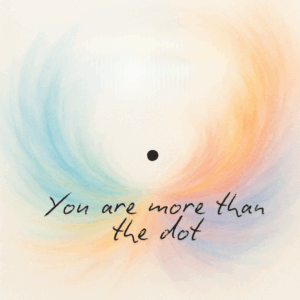When you focus on the good, the good gets better.
Abraham Hicks
Focusing on the good
When I saw this quote on Facebook I thought “Wow how true!”. Even reading the quote somehow made my life a little better. If only life was that easy, i.e. to focus on the good and move effortlessly to feeling better just by noticing the positive things in our lives.
Sadly all to often when we suffer from mental health challenges (anxiety, depression, etc.), the opposite is true, we end up thinking about the not so good things in our lives. And just like the quote implies the more we focus on those things the worse they get.
We even make things worse by trying to suppress those thoughts, and through that action keep them alive. As the saying goes “What you resist persists”.
If you have read some of my other blogs you would be all too familiar with the “Pink Elephant mind trap”. The more I tell you to not think of a pink elephant the more lodged it remains in your minds. The same is true when we don’t want to keep focused on the not so good things in our lives, guess what we end up focusing on the not so good things in our lives. A perfect mind trap that keep some of us in a negative mindset for a life time.
This is why I’m so passionate about highlighting the mind traps (like the pink elephant trap), because they can keep us stuck for a life time. IT NEED NOT BE THE CASE.
At ACT Hypnotherapy our motto is “We need not suffer there is help out there”. The help which is available comes in the form of understanding how the mind works, see below.
So what can we do about it?
Here are five simple steps:
Step 1 (Acceptance – Focus on the good)
The first step is to accept and notice what we are doing, i.e. focusing on what is wrong. When we notice and accept our behaviours we stop the struggle and are therefore more available to doing something different.
(Tip: Often when I use the word “accept” clients hear or interpret it as “resign to”. This far from the truth. “Accept” means in this context, to become aware of what is happening, draw a line in the sand around it, in order to then do something different.)
Step 2 (Consequences – Focus on the good)
The second step is to notice the negative consequence of the strategy of focusing on the negative. When we see the negative consequences of our behaviours it creates a separation from the negative thoughts. For those of you who know Byron Katie’s “The Work” (https://thework.com/), and her questioning strategy around firmly held thoughts, will recognise the benefits of seeing the negative consequences of our thoughts. Her two questions around the negative focus and subsequent negative thoughts are:
– How do you react when you believe that thought? (Negative consequence)
-Who would you be without those thoughts? (Positive consequences of letting go of the negative thinking)
When we ask those questions we break our trance around the negative thought by making it less desirable and highlight the benefits of no longer holding onto that thought.
Another everyday version of Byron Katie’s two questions is “How is that thought working for you?”
If you want to understand ACT: Think of a negative thought that you may have and ask yourself the two questions and see what happens 🙂
Step 3 (Focus on the good)
The third step is to do as the quote says, and that is to notice the good things in our lives. By noticing the good things in our lives we move our attention away from the negative thoughts as we can’t think two thoughts at the same time. Try it!
When we do notice the good things in our lives and really value them, we produce serotonin in our bodies. Serotonin is the neurotransmitter which creates that wellbeing feeling that we all like so much. When we feel better, we relax and make better choices in our lives.
So there is good science behind the strategy of noticing what is good in our lives. The science of serotonin can give us a solid tangible reason for focusing on the good (if science does it for you). Or you can simply do it because it feels good and better. After all we’ve tried the negative thinking thing and it just doesn’t feel that good. Life should be fun, so lets build a mindset that makes us feel good more often than not.
This third step is the rational behind gratitude diaries, and other affirming behaviour in our lives such as birthday cards and wishes etc. They all make us feel good. They bring to our attention all the good things in our lives. The good things which were obscured when we were lost in our negative thoughts.
So in a way focusing on the good brings back balance in our lives. When we are balanced we have a more rational perspective on life.
Step 4 (Realistic – Focus on the good)
The fourth step we need to do is be realistic. Often when we are in a negative mindset we really don’t have the motivation or the mind band width to do too much. In that situation a “Cheer up” or a “Turn a frown upside down” comment just doesn’t cut it. When we are realistic we set ourselves up for success, we give ourselves an appropriate level of action that is manageable. Especially when that action is supported by the reasons and benefits given above. When we have a good reason to take action we are more likely to take that action, reasons such as “our negative focus is not helping” and the benefits of focusing on the positive.
Also when there is inertia because of our mindset, the easiest way to break that inert is by taking small actions. Small actions are manageable and make us feel like we are doing something rather than being stuck. That first step often gives us enough hope and awareness to take another step.
(Tip: This is another of those subtle mind traps. Often when we are anxious, depressed and in a depleted mindset, we have an unconscious wish for any effort that we exert to easily resolve our issues. When we find that it is more difficult than what we wished, we give up because our wish for an easy fix has not materialised. We say to ourselves “It should have been easy but it is difficult, it’ll never change!” . However the opposite is true when we think to ourselves “it’ll be difficult” and acknowledge the difficult. When we acknowledge the difficulty, we roll up our sleeves, apply ourselves and strangely it feels easier.)
Conclusion
So that is four steps to feeling good in any situation. It represents a way of untying the mental knot we sometimes find ourselves in.
- Accept where you are.
- Notice negative consequences of the strategy. Notice the positive consequences of doing something different.
- Notice the good things in your life. (Generation of Serotonin)
- Be realistic and take small steps.
How Hypnotherapy can help (Step 5)
This is where the hypnotherapist represents the “Fifth Step”. Sometimes clients need a dispassionate guide to help them untangle the knot that they find themselves in, at least for the first time. This dispassionate observer can ask the questions needed to identify the good in a client’s life. They also hold the positive direction of travel for the client until the client can do it for themselves. “The what’s been good strategy ” is a key element of solution focused hypnotherapy for the reasons discussed above.
Of course there are other very powerful strategies within solution focused hypnotherapy (SFHT) such as the use of trances, dealing with negative thoughts etc.
So if you would like to know more, take advantage of a FREE 1 hour consultation, where you will learn how the brain works, how we create anxiety, depression, anger etc. But more importantly what we can do about it.
I look forward to meeting with you 🙂.
Book your FREE Consultation
Maybe you are not sure how ACT Hypnotherapy Swindon can help you, or just want to find out more about how we work. Contact us for for a free, no obligation initial consultation. You have nothing to lose and everything to gain.






